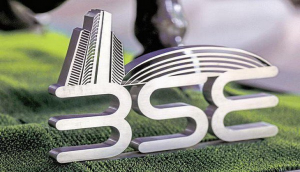
The performance audit report of the Comptroller and Auditor General (CAG) of India on Planning and Implementation of Phase III Expansion Project of Mangalore Refinery and Petrochemicals Limited was laid in the Parliament on 2 August.
Mangalore Refinery and Petrochemicals Limited, in the year 2006, decided to undertake refinery upgradation project at an estimated cost of ` 7,943 crore. The objective of the Project was to increase the refinery capacity from 11.82 MMTPA to 15 MMTPA and to enhance the production of value added products.
The estimates of cost underwent changes from time to time due to change in capacity, addition and deletion of various units. As of October 2015, the total adjusted estimated cost of the Project worked out to `16,323 crore.
Against this, the Company had incurred an expenditure of `14,832 crore by March 2016. The project, which was initially proposed to be completed in June 2010, was actually completed in June 2015.
The planning, execution and commissioning of units under the project and its impact on refinery operations during the period 2011-16, were reviewed during the course of Performance Audit.
The Performance Audit was conducted with a view to examine the economy, efficiency and effectiveness in execution of the Project and to review the refinery operations, so as to ensure that the same were carried out economically and efficiently.
Audit covered the planning and execution of Capital Projects including Phase III expansion, setting up of Single Point Mooring, synchronisation and operational performance of the processing units, auxiliary units and utilities for the period 2011-12 to 2015-16. Compliance with relevant statutory regulations relating to environmental issues was also covered. Significant audit findings are summarised in the following paragraphs:
PLANNING AND EXECUTION OF CAPITAL PROJECTS
Deficiencies in planning of capital projects
The company frequently revised Capital Projects Plan which resulted in time overrun of more than two years and escalation in estimated cost by ` 2,509 crore during the planning stage. (Para 2.1.1)
Delay in establishment of Poly Propylene Unit
The production of Propylene by processing Vacuum Gas Oil in Petrochemical Fluidized Catalytic Cracking Unit was known to the company at the time of evaluation of viability of the standalone PolyPropylene Unit in 2006/2008. The unit, however, was included in the plan in May 2009 which delayed the process of acquisition of land, obtaining clearances, etc. Delay in taking decision to establish PolyPropylene Unit delayed the production of value added product, Polypropylene.
Availing External Commercial Borrowings (ECB) loan without mitigation of risk
The Company availed (March 2012 and March 2013) ECB loan for USD 650 million equivalent to ` 3,727 crore without hedging the related exchange risk even though the cost of loan with hedging was cheaper as compared to domestic loan. Due to non-hedging of ECB loan, the company has already lost approximately `13.70 crore (up to September 2016) and may incur further losses in case rupee weakens against USD.
Drawal of funds in excess of requirement
The Company drew funds for the project in excess of its requirements due to which `768.46 crore was lying idling in non-interest bearing current account.
Delay in commissioning of Captive Power Plant
Captive Power Plant (CPP), a critical utility for a refinery for supply of steam and power, needs to be commissioned before commissioning of all other process units. CPP-III was commissioned in August/September 2014 as against schedule date of January 2012 due to which various process units remained idle for a period ranging from 11 to 26 months, even after their mechanical completion.
Non-finalisation of arrangement with Indian Strategic Petroleum Reserves Limited
Company entered (June 2014) into a Memorandum of Understanding with Indian Strategic Petroleum Reserves Limited for sharing of Single Point Mooring (SPM) Project and Cavern facility but the related Infrastructure Sharing Agreement was pending. Single Point Mooring Project got commissioned in August 2013 but the envisaged benefit could not be derived as Cavern facility was not ready (November 2016).
Idling of Booster Pumping Station and Pipeline
Company commissioned (December 2013) Booster Pumping Station at a cost of `188.69 crore and pipeline from cavern to refinery at `14.73 crore, which remained idle till September 2016 due to delay in commissioning of Cavern.
Execution of Single Point Mooring Project
The Company planned (2010) to install a Single Point Mooring (SPM) facility at an estimated cost of ` 1043.57 crore, to handle the increased quantity of crude in larger vessels (VLCC). Savings in freight, avoidance of demurrage and improvement in Gross Refinery Margin as envisaged while the decision for setting up of SPM facility was taken, were actually not achieved.
OPERATION OF PROCESSING UNITS
Crude Planning and Procurement
Though Crude Distillation Unit-III which was designed to process High Tan crudes, commissioned in March 2012, the secondary processing units designed to process feed from this unit were commissioned only from November 2012 to September 2014 due to which the Company produced low value products like Vacuum Gas Oil, Naphtha, Aviation Turbine Fuel and Fuel Oil during 2011-12 to 2014-15.
Excess quantity of these products were exported at lesser rate compared to domestic rate which resulted in loss of revenue of ` 2774.52 crore and non-recovery of production cost of ` 1666.86 crore.
Non synchronisation of Hydrocraker Units (HCU) with Petrochemical Fluidized Catalytic Cracking Unit (PFCCU)
HCU-1 and HCU-2 were revamped (Sep 2011 and May 2012) to convert the mode of operation from Recycle to Once Through Mode. However, HCUs' had to be operated under recycle mode during the period 2011-12 to 2014-15 defeating the objective of revamp.
Even under the recycle mode of operation there was under recovery as against the designed yield which resulted in loss of revenue of ` 6,328.76 crore.
Commissioning and operation of PFCCU
PFCCU, which was commissioned in August 2014 to produce propylene, had to be shut down for 20 days in September 2014 for rectification, which resulted in loss of production and consequential revenue loss of ` 198.53 crore.
PFCCU processed (August 2014 to May 2015) 6,96,922 MT of feed and produced 3951 MT of Propylene as against the design yield of 1,43,566 MT which resulted in loss of margin of ` 382.83 crore.
Post commissioning of Poly Propylene Unit in June 2015, propylene produced by PFCCU was short by 136791 MT (June 2015 to March 2016) compared to the design yield, which resulted in short production of Poly Propylene and consequent revenue loss of ` 364.77 crore. (Para 3.6)
OPERATION OF SUPPORT FACILITIES
Excess consumption of Steam
Steam consumption during the year 2015-16 was more than the ideal consumption which resulted in extra expenditure of ` 231.94 crore.
Excess consumption of Naphtha in Hydrogen Generation Unit (HGU)
During 2011-16, none of the three HGUs could achieve designed yield of 33 per cent. However, due to low yield, 335,990 MT of additional naphtha valuing ` 1,025 crore had to be processed for the required quantity of Hydrogen.
ENVIRONMENTAL ASPECTS
Petroleum refinery, during the conversion process of crude, impacts the environment and the eco system. Potential environmental issues associated with petroleum refining include air pollution, water pollution, noise pollution, land pollution, waste water and other hazardous materials.
It was noticed that the Company was yet to comply with provisions of environment clearance of MoEF (April 2008) regarding installation of Flare Gas Recovery System and establishing of green belt. It was also yet to comply with Karnataka State Pollution Control Board's direction to cover the coke yard and sulphur yard to avoid dust pollution.
RECOMMENDATIONS
Recommendations made in the Report are given below:
In future, the Company may draw up a comprehensive plan before finalising the projects in order to avoid time and cost overrun. Requirement of funds for the projects may be made on a realistic basis to avoid excess drawl of funds.
The Company may ensure timely completion of utilities like Power Plants which have cascading effect on commissioning of other units
The Company may make urgent efforts to optimise the utilisation of SPM.
The Company may ensure optimum capacity utilisation of all the processing units.
The Company may evolve a system for evaluating the consumption of utilities by the various processing units so as to ensure optimum utilisation of these utilities.
-ANI







![BJP's Kapil Mishra recreates Shankar Mahadevan’s ‘Breathless’ song to highlight Delhi pollution [WATCH] BJP's Kapil Mishra recreates Shankar Mahadevan’s ‘Breathless’ song to highlight Delhi pollution [WATCH]](https://images.catchnews.com/upload/2022/11/03/kapil-mishra_240884_300x172.png)

![Anupam Kher shares pictures of his toned body on 67th birthday [MUST SEE] Anupam Kher shares pictures of his toned body on 67th birthday [MUST SEE]](https://images.catchnews.com/upload/2022/03/07/Anupam_kher_231145_300x172.jpg)






